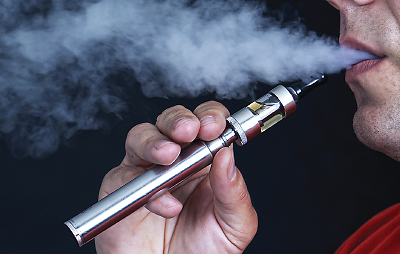Teen Alcohol, Tobacco Use Down, E-cigarette Use Up
Abstract
Though numbers show that progress is being made in reducing potentially harmful substance use among youth, NIDA leaders say that it is important that society does not become complacent in such efforts.
Last month, the National Institute on Drug Abuse (NIDA) announced some encouraging results—with one area of concern—on teenage substance use.

“The 2014 Monitoring the Future Survey is giving us some very good news,” NIDA Director Nora Volkow, M.D., said during a press conference. “It is showing that illicit drug use among teenagers is actually going down. … And also a decrease in licit drug use—tobacco and alcohol.”
The Monitoring the Future (MTF) Survey is a national assessment on drug, alcohol, and tobacco use as well as attitudes concerning such use, among eighth- , 10th- , and 12th-graders within a given year. The survey has been conducted annually since 1975 by researchers at NIDA and the University of Michigan.
The 2014 survey showed that past-month use of smoked marijuana remained steady—compared with that of 2013—among eighth-graders at 6.5 percent, 10th-graders at 16.6 percent, and 12th-graders at 21.2 percent. Approximately 6 percent of 12th-graders reported daily use of marijuana. Investigators also found that drug use such as abuse of over-the-counter and prescription drugs and inhalants also declined.
“With the rates of many drugs decreasing, and the rates of marijuana use appearing to level off, it is possible that prevention efforts are having an effect,” said Volkow. “It is now more important than ever for the public-health community to continue to educate teens, parents, teachers, community leaders, the media, and health care providers about the specific harms of drug use among teens, whose brains are still developing.”
Rates related to alcohol use continued their gradual decline in all grades for the fifth consecutive year. In 2014 there was an approximate 10 percent drop in past-month alcohol use among surveyed youth, with binge drinking (five or more drinks in a row in the last two weeks) for high school seniors now under 20 percent—compared with 31.5 percent in 1998.
Tobacco use is also dwindling among American youth. “Tobacco-use rates in the MTF survey have reached their lowest level in the history of the study,” said Wilson Compton, M.D., M.P.E., deputy director at NIDA. According to survey results, daily cigarette smoking has decreased almost 50 percent since 2009 across all grades. For high school seniors it dropped to 6.7 percent, down from 8.5 percent last year and 11.2 percent five years ago.
“This speaks to us about the prevention efforts we’ve made in controlling potentially deadly tobacco products,” he emphasized. However, such prevention efforts may be threatened by increasingly popular electronic nicotine delivery systems such as electronic cigarettes (e-cigarettes).
“Despite the positive developments this year, we are concerned about the levels of e-cigarette use among teens that we are seeing,” said the study’s principal investigator, Lloyd Johnston, Ph.D., a professor at the Institute for Social Research at the University of Michigan. “It would be a tragedy if this product undid some of the great progress made to date in reducing cigarette smoking by teens.”
Last year marked the first time that e-cigarette use was assessed in the MTF survey. Results showed that past-month use of the nicotine vaporizing products was 8.7 percent among eighth-graders, 16.2 percent among 10th-graders, and 17.1 percent among high school seniors.
“Past-30-day use of e-cigarettes among eighth- and 10th-graders was twice as high as that of regular tobacco cigarettes,” the survey’s senior investigator, Richard Miech, Ph.D., a social research professor at the University of Michigan, stated. Though e-cigarettes are marketed as a smoking-cessation aid, Miech explained that a substantial number of 10th-graders reported that they have never used tobacco products before.
“The take-home message is that many youth are initiating nicotine use with e-cigarettes. And nicotine, of course, is addictive,” he emphasized.
Because of this year’s results concerning the prevalence of e-cigarettes, Miech said that the 2015 survey will ask more questions relating to the contents of the devices—nicotine or hashish oil (cannabis-derived oil)—and the perceived safety of the devices among young users. “We don’t know now, but we’ll use future MTF surveys to see if e-cigarette use predicts other drug use,” Miech concluded.
The 2014 MTF survey included more than 41,000 students from 377 public and private schools. ■
Results from the 2014 Monitoring the Future Survey and other information can be accessed here.



